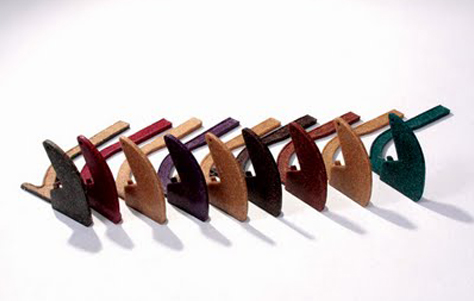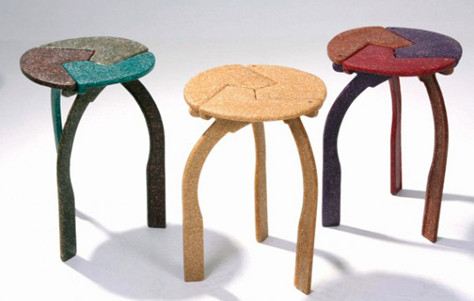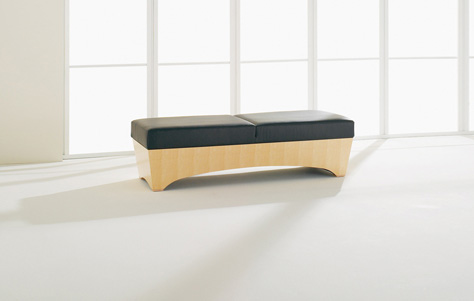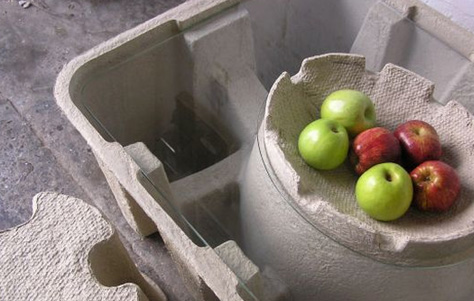The Pallares “Puzzle” Chair by Carlos Cordoba
A result from research conducted at the Department of Design at the University of Nariño in Colombia took form in a piece of furniture by Carlos Cordoba. He calls it the Pallares “Puzzle” Chair, and through the natural fiber composite that fits together like a puzzle, the environmentally-friendly chair makes its statement.
Puzzle Chair. Designed by Carlos Cordoba.
Interchange or Take Apart the Three Sections of the Pallares Puzzle Chair by Carlos Cordoba for Easy Assembly and Storage.
Each Pallares Chair is composed of three articulated parts that fit together snugly, forming a stool. Each part is made from Tetera, a natural fiber and polyester resin composite, and the colorfully-interchangeable parts can be snapped together or taken apart easily for mixed use and easy storage.
As Cordoba states, the Pallares Chair “is a design intended to be used in school buildings with little space for children aged 3 to 5 years.” Besides encouraging consumer interaction through color choice and hands-on assembly, Tetera itself has a story. Coming from the plant known as Stromanthea luthea, Tetera is normally made into a form of natural fiber that is then woven into artisan products in Colombia. By breaking the natural fiber down further into its pelleted state and combining it with the polyester resin, it can form the solid we see in the Pallares Chair.

The Pallares “Puzzle” Chair designed by Carlos Cordoba promotes a healthy interaction between the consumer and their furniture, whether it be choosing the colors and assembling the seat or simply by telling its story.
About the Designer: Carlos Cordoba of Spain may or may not be associated with the clothing design company of the same name down in Andalucia, but one thing is for sure: this Spanish designer keeps an elusive online presence. He did remark on the research process that the University of Nariño conducted, saying how they had been compiling research since June 2005, with the design selection made in August 2007. Once November 2008 came, he mentioned the Tetera fiber’s possibilty of elaboration which would diversify into new production processes and introduce new ways craftsmen and designers can use it.





Leave a Reply